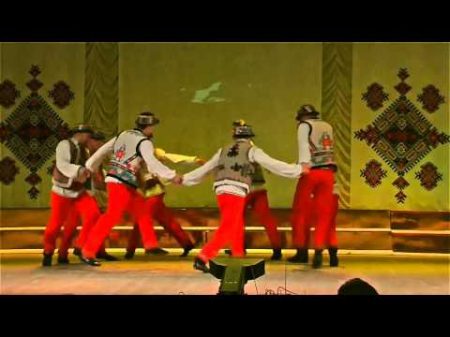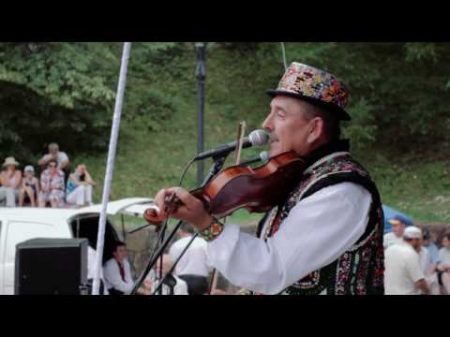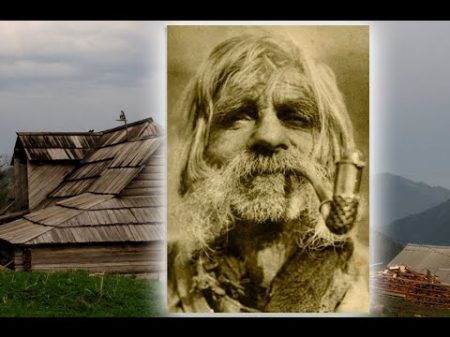Та най верба груші родит Гуцульська Ukrainian Hutsul song
Та най верба груші родит. Гуцульська етнічна музика і пісня. Світлини з життя українських гуцулів. Ukrainian Hutsul song «Ta naj verba hrushi rodyt» (May the willow-tree bring up pears). Hutsuls — Ukrainian highlanders from the Carpathians, the last aborigenes of Europe (pre-Indo-European population that survived in the mountains of Ukraine).
HUTSULS — ANCIENT PROTO-EUROPEANS / EUROPEAN ABORIGENES:
Hutsul highlanders are among the most ancient European populations (if not the most ancient one), as they have the greatest type variety of maternal haplogroup H in all of Europe — maternally ancestral and common among all European nations (maternal genes).
When it comes to Hutsul paternal genetics, they are the most «Semitic» among all of Ukrainians, as they have over 30 % of haplogroup J (80-90 % among Levant Arabs and Jews, top among Yemenites) comparing to some 9-10 % & among the rest of Ukrainians. Adding J to cleasely related nearly 30-40 % of proto-European / Dinaric haplogroup I, makes them nearly pure proto-Europeans (some 70 %).
Hutsuls have Dinaric (ancient non Indo-European proto-Europeans) anthropological features. It means, they are the original ancient population of Europe before arrival of Indo-Europeans (Aryans). Today Hutsul speak Indo-European (Ukrainian — were linguistically assimilated after the arrival of Aryans) language but 1000 years ago they must have spoken some weird non-Indo-European tongue, which, most likely had Arabo-Circassian «h» / «ah» «whistling / throat» phonetics (J-G haplogroups). Ancient proto-Europeans settled Europe from the Middle East much earlier before warlike Indo-Europeans (carriers of R1a & R1b haplogroups) arrived from the North (Baltic coast) and the Eastern steppes. They totally «crushed» and subdued the native proto-Europeans, taking wives from them (thats why maternal genetics of Europeans is «Hutsul»). Aboriginal proto-European men (of Middle Eastern & Caucasus origins — carriers of I-J-G haplogroups) had to rereat into the mountain regions of Europe, where they survived to our days in the Carpathian mountains basin (Ukrainian Hutsuls, Romanian highlanders), Dinaric Alps (Bosnian highlanders) and Scandianvian mountains (Norwegians and Swedes and their Norse offsprings — Icelanders, all, like Hutsuls have one of the highest amounts of proto-European I haplogroup) plus Sardinian islanders & Circassians (esp. Shapsugs) — carriers of a related proto-European G haplogroup. But all Ukrainians, though being mainly Indo-Europeans (some 48%) have high amount proto-European I (some 20-30%). Proto-European population got very much preserved in Ukraine, Romania, Bosnia, Bulgaria as Aryans were moving from the north Prussia & Lithuania, European Russia. Balts, Poles, Celts, European Russians, Germans, Frenchmen, Britons, Irishmen, Spaniards, Cezchs, north Italians along with Afghanis, Pakistanis, north Indians these are all warlike Aryans (Indo-Europeans). They were moving into Europe from the east by waves via Poland — Belarus. Prussia & Lithuania are regarded as a cradle nestling spot of Indo-Europeans. Othhers went sout-east to north India, Tajikistan.
Interesting fact ancient proto-Europeans (non Aryan European aborigenes) have something to do with American Indians, as it is precisely among them occurs high rate of Q haplogroup (American Indian) found (at rate of 5 to 10 %) only among proto-European non-Aryan peoples (concentrated mainly in Norway, Ukraine, Iceland, Bosnia, Romania, Circassia). Some Hutsuls look very much American Indian in appearance — 0:18, 0:33, 2:53. Also Hutsul «wrapped shoes» (as on 1:27 & 2:53) are as those of Mongols (have closest links to American Indians) and American Indians. In fact Ket language (Kets are the only Q (American-Indian) people in Siberia) indeed has this Arabo-Circassian throat / whistling sound. Everything points to that (and it is established fact) that proto-Europeans originate from the Middle East and are related to Semitic peoples in long run). Romania & Moldova can be called European Syria, not just because its population has signficant amount of proto-European / Dinaric genes (I group), but also bcs Trajan when conquered Dacia moved lots of Syrians there from Middle East, but these are newcomers.
HUTSULS — ANCIENT PROTO-EUROPEANS / EUROPEAN ABORIGENES:
Hutsul highlanders are among the most ancient European populations (if not the most ancient one), as they have the greatest type variety of maternal haplogroup H in all of Europe — maternally ancestral and common among all European nations (maternal genes).
When it comes to Hutsul paternal genetics, they are the most «Semitic» among all of Ukrainians, as they have over 30 % of haplogroup J (80-90 % among Levant Arabs and Jews, top among Yemenites) comparing to some 9-10 % & among the rest of Ukrainians. Adding J to cleasely related nearly 30-40 % of proto-European / Dinaric haplogroup I, makes them nearly pure proto-Europeans (some 70 %).
Hutsuls have Dinaric (ancient non Indo-European proto-Europeans) anthropological features. It means, they are the original ancient population of Europe before arrival of Indo-Europeans (Aryans). Today Hutsul speak Indo-European (Ukrainian — were linguistically assimilated after the arrival of Aryans) language but 1000 years ago they must have spoken some weird non-Indo-European tongue, which, most likely had Arabo-Circassian «h» / «ah» «whistling / throat» phonetics (J-G haplogroups). Ancient proto-Europeans settled Europe from the Middle East much earlier before warlike Indo-Europeans (carriers of R1a & R1b haplogroups) arrived from the North (Baltic coast) and the Eastern steppes. They totally «crushed» and subdued the native proto-Europeans, taking wives from them (thats why maternal genetics of Europeans is «Hutsul»). Aboriginal proto-European men (of Middle Eastern & Caucasus origins — carriers of I-J-G haplogroups) had to rereat into the mountain regions of Europe, where they survived to our days in the Carpathian mountains basin (Ukrainian Hutsuls, Romanian highlanders), Dinaric Alps (Bosnian highlanders) and Scandianvian mountains (Norwegians and Swedes and their Norse offsprings — Icelanders, all, like Hutsuls have one of the highest amounts of proto-European I haplogroup) plus Sardinian islanders & Circassians (esp. Shapsugs) — carriers of a related proto-European G haplogroup. But all Ukrainians, though being mainly Indo-Europeans (some 48%) have high amount proto-European I (some 20-30%). Proto-European population got very much preserved in Ukraine, Romania, Bosnia, Bulgaria as Aryans were moving from the north Prussia & Lithuania, European Russia. Balts, Poles, Celts, European Russians, Germans, Frenchmen, Britons, Irishmen, Spaniards, Cezchs, north Italians along with Afghanis, Pakistanis, north Indians these are all warlike Aryans (Indo-Europeans). They were moving into Europe from the east by waves via Poland — Belarus. Prussia & Lithuania are regarded as a cradle nestling spot of Indo-Europeans. Othhers went sout-east to north India, Tajikistan.
Interesting fact ancient proto-Europeans (non Aryan European aborigenes) have something to do with American Indians, as it is precisely among them occurs high rate of Q haplogroup (American Indian) found (at rate of 5 to 10 %) only among proto-European non-Aryan peoples (concentrated mainly in Norway, Ukraine, Iceland, Bosnia, Romania, Circassia). Some Hutsuls look very much American Indian in appearance — 0:18, 0:33, 2:53. Also Hutsul «wrapped shoes» (as on 1:27 & 2:53) are as those of Mongols (have closest links to American Indians) and American Indians. In fact Ket language (Kets are the only Q (American-Indian) people in Siberia) indeed has this Arabo-Circassian throat / whistling sound. Everything points to that (and it is established fact) that proto-Europeans originate from the Middle East and are related to Semitic peoples in long run). Romania & Moldova can be called European Syria, not just because its population has signficant amount of proto-European / Dinaric genes (I group), but also bcs Trajan when conquered Dacia moved lots of Syrians there from Middle East, but these are newcomers.
развернуть свернуть
17:56
- Комментарии
RSS
Нет комментариев. Ваш будет первым!
Войдите или зарегистрируйтесь чтобы добавлять комментарии



